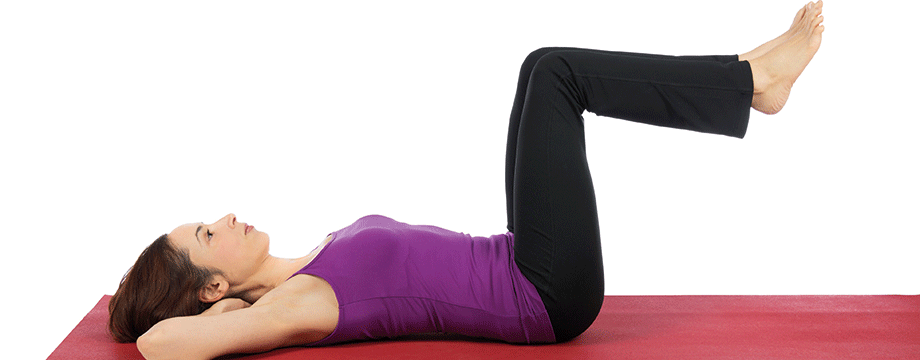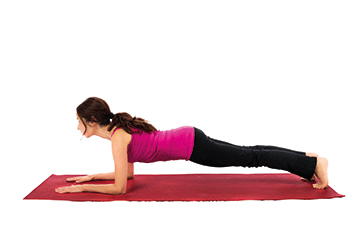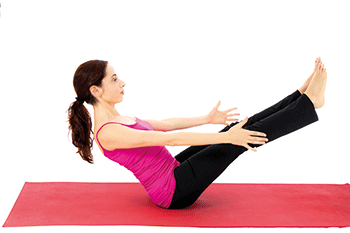From strength to strength

Strengthen your core with these Pilates moves from Sarah Vrancken
Pilates is the quickest way to strengthen the core, whilst also building flexibility and stability in the muscles. It’s so different from anything else out there, because you have to consciously switch on the main core muscles, which are your transversus abdominis and the pelvic floor, as you breathe out whilst doing the exercises. Pilates focuses on the anatomy of the body –it’s a really great way of becoming more aware of your posture, any imbalances in the body and more importantly, what you can do to get your body in a happier, healthier place.
Pilates is not easy at first, but it’s the challenge that makes it interesting and once you feel and see the progress – and the benefits it can bring to your daily life – you may find your Pilates mat is your new best friend. Here are three great core strengthening exercises.
In Pilates it’s not about just doing the exercises or holding poses, it’s about the right technique and always working from an engaged core and stable, relaxed shoulders and hips. That’s why it gets results so quickly! If you are doing things right, you are building strength, flexibility and stability in the right places and that’s what’s going to make the difference.
The 100 position
(pictured above)
It looks deceivingly easy, but it’s a very tough core exercise if you do it right. The most important thing to do is make sure that you put your body in the ‘neutral position’ which means that your shoulders are relaxed, rib cage is in contact with the floor and the lower spine (your lumbar curve) has a natural curve that is away from the mat. This gap underneath the lower spine needs to stay there when you take your legs up and place the knees above the hips. Don’t tilt the pelvis – instead switch on your core, and as you breathe out, pull your belly button towards the spine and lift your pelvic floor towards your belly button. It can be a lot to think about when you do it at first but, trust me, as you get to grips with it, it becomes very intuitive.
All you have to do now is keep breathing whilst keeping the body in the perfect neutral position. Also, use the out-breath to contract the core, which consists of your transversus abdominis (the muscle you engage when you pull your belly button towards the spine) and your pelvic floor (the sling of muscles you ‘zip up’ as you breathe out). Note: if it feels easy, you probably have taken your knees in too much towards the chest or you have lost your neutral curve under the lumbar spine.

Leg pull prone (also known as plank)
Whatever age you are, whatever gender, planks are good for you! However, to get this exercise to work for you, you need to know which muscles to switch on and which ones to relax. Also, a full plank is only advised if you have enough control over your core so that it doesn’t affect your spine. You can find out quickly if that’s the case as a weak core in this position will make your lower back pinch or ache, and that’s absolutely what we want to avoid in this exercise.
Bring the elbows in line with the shoulders and bring your hips in line with the rest of the body. Then, it’s really important to relax the shoulders so that they are not taking away the effort from the core. Just rotate the shoulders back and lengthen through the collar bones. You’ll feel your chest bone lowers a bit more towards the floor, which is a good sign. Then, if you wouldn’t switch on your core, your abs would hang like a hammock towards the floor. Don’t let that happen – switch on the core and on the out-breath lift your belly button towards the spine, whilst – if possible – lifting the pelvic floor. If you feel it’s making your lower back ache, take a break as it means you lost your core control. Or, it may mean that the exercise is too strong for you at the moment and then it’s better to go for a half plank. This involves lowering your knees towards the floor and bringing your hips in line so that you create a diagonal line from the shoulders to the knees.

The teaser position
As in most Pilates exercises, a lot of muscles work at once to hold the teaser position. You have to have strong but flexible hip flexors, quads and hamstrings, as well as have sufficient flexibility in your lower back. You can absolutely do this exercise with bent knees so that it’s a little easier, and if you still struggle, then gently put your hands behind the thighs for balance. It is the core that will keep you balanced, so switch it on: as you breathe out, pull in your belly button towards the spine and lift your pelvic floor.
There are two things to watch out for here. Firstly, make sure your shoulders are relaxed and away from the ears. Rotate them backwards and drop them down so that they are relaxed and down. Secondly, your lower back is slightly curved – tilting the pelvis (bringing your tailbone under) and then hugging your abs into the body (the ‘abdominal scoop’) is what gives you a strong core connection.
Sarah Vrancken is a qualified Pilates instructor. Visit www.kalmpilates.com to find out more.
Read previous Your Living articles here...
Read articles from our latest issue here...